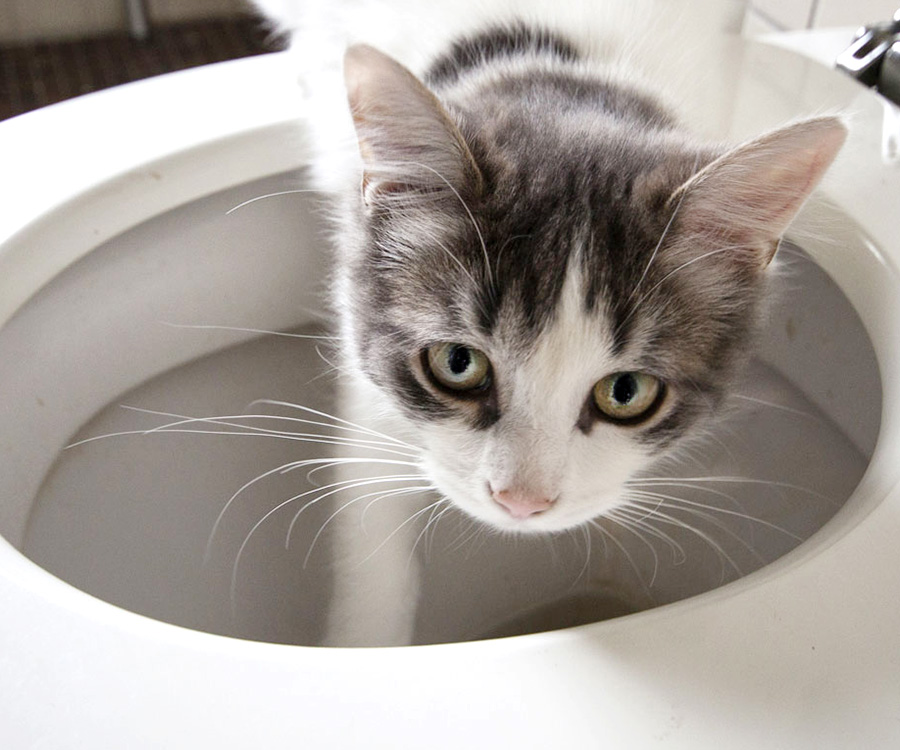Reasons You Shouldn't Flush Cat Poop Down Your Toilet - Maintain Your Plumbing System
Reasons You Shouldn't Flush Cat Poop Down Your Toilet - Maintain Your Plumbing System
Blog Article
Each person has got their personal assumption involving Can You Flush Cat Poo or Litter Down the Toilet?.

Intro
As feline owners, it's necessary to be mindful of how we deal with our feline buddies' waste. While it might appear practical to flush pet cat poop down the bathroom, this technique can have destructive consequences for both the setting and human wellness.
Alternatives to Flushing
The good news is, there are much safer and more liable ways to dispose of pet cat poop. Take into consideration the adhering to options:
1. Scoop and Dispose in Trash
One of the most common approach of disposing of pet cat poop is to scoop it into a naturally degradable bag and toss it in the trash. Make certain to make use of a devoted clutter inside story and dispose of the waste quickly.
2. Use Biodegradable Litter
Opt for naturally degradable cat litter made from materials such as corn or wheat. These clutters are environmentally friendly and can be safely dealt with in the garbage.
3. Hide in the Yard
If you have a yard, think about burying feline waste in a designated area far from vegetable yards and water resources. Be sure to dig deep enough to stop contamination of groundwater.
4. Set Up a Pet Waste Disposal System
Buy a family pet garbage disposal system specifically designed for pet cat waste. These systems use enzymes to break down the waste, lowering smell and ecological influence.
Health Risks
Along with environmental issues, purging pet cat waste can additionally pose health and wellness dangers to human beings. Pet cat feces may include Toxoplasma gondii, a bloodsucker that can trigger toxoplasmosis-- a possibly extreme disease, especially for expectant females and individuals with weakened body immune systems.
Environmental Impact
Flushing feline poop presents harmful microorganisms and bloodsuckers into the water system, posturing a significant danger to marine environments. These contaminants can adversely affect aquatic life and concession water high quality.
Final thought
Accountable family pet possession expands past offering food and sanctuary-- it also entails proper waste management. By avoiding flushing feline poop down the toilet and selecting different disposal methods, we can reduce our ecological footprint and protect human health and wellness.
Why Can’t I Flush Cat Poop?
It Spreads a Parasite
Cats are frequently infected with a parasite called toxoplasma gondii. The parasite causes an infection called toxoplasmosis. It is usually harmless to cats. The parasite only uses cat poop as a host for its eggs. Otherwise, the cat’s immune system usually keeps the infection at low enough levels to maintain its own health. But it does not stop the develop of eggs. These eggs are tiny and surprisingly tough. They may survive for a year before they begin to grow. But that’s the problem.
Our wastewater system is not designed to deal with toxoplasmosis eggs. Instead, most eggs will flush from your toilet into sewers and wastewater management plants. After the sewage is treated for many other harmful things in it, it is typically released into local rivers, lakes, or oceans. Here, the toxoplasmosis eggs can find new hosts, including starfish, crabs, otters, and many other wildlife. For many, this is a significant risk to their health. Toxoplasmosis can also end up infecting water sources that are important for agriculture, which means our deer, pigs, and sheep can get infected too.
Is There Risk to Humans?
There can be a risk to human life from flushing cat poop down the toilet. If you do so, the parasites from your cat’s poop can end up in shellfish, game animals, or livestock. If this meat is then served raw or undercooked, the people who eat it can get sick.
In fact, according to the CDC, 40 million people in the United States are infected with toxoplasma gondii. They get it from exposure to infected seafood, or from some kind of cat poop contamination, like drinking from a stream that is contaminated or touching anything that has come into contact with cat poop. That includes just cleaning a cat litter box.
Most people who get infected with these parasites will not develop any symptoms. However, for pregnant women or for those with compromised immune systems, the parasite can cause severe health problems.
How to Handle Cat Poop
The best way to handle cat poop is actually to clean the box more often. The eggs that the parasite sheds will not become active until one to five days after the cat poops. That means that if you clean daily, you’re much less likely to come into direct contact with infectious eggs.
That said, always dispose of cat poop in the garbage and not down the toilet. Wash your hands before and after you clean the litter box, and bring the bag of poop right outside to your garbage bins.
https://trenchlesssolutionsusa.com/why-cant-i-flush-cat-poop/

I found that entry about How to Dispose of Cat Poop and Litter Without Plastic Bags when exploring the web. In case you liked our blog entry please be sure to share it. Thanks for your time. Kindly visit our site back soon.
Additional Information Report this page